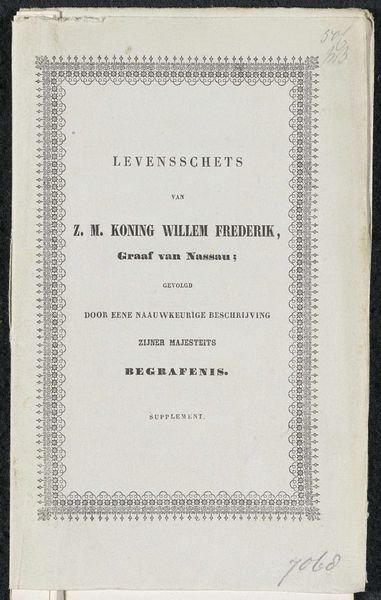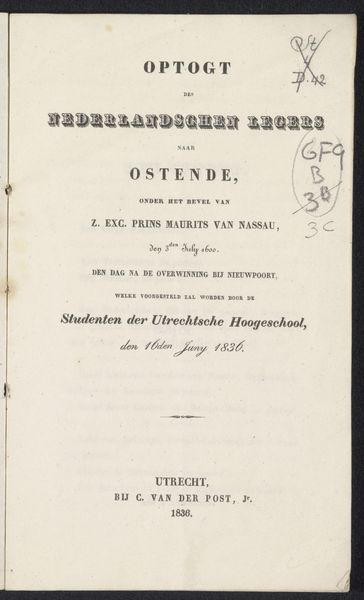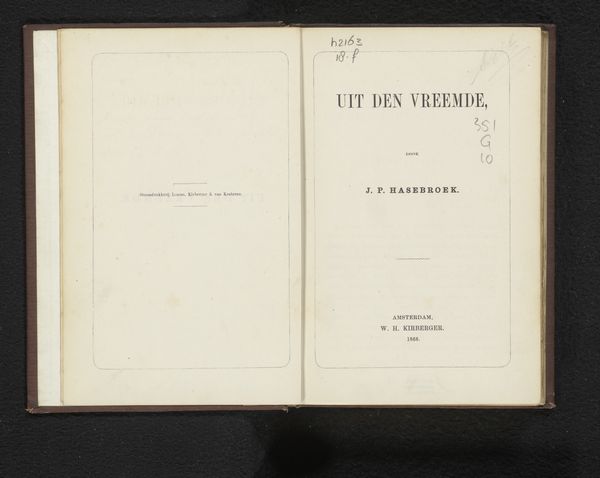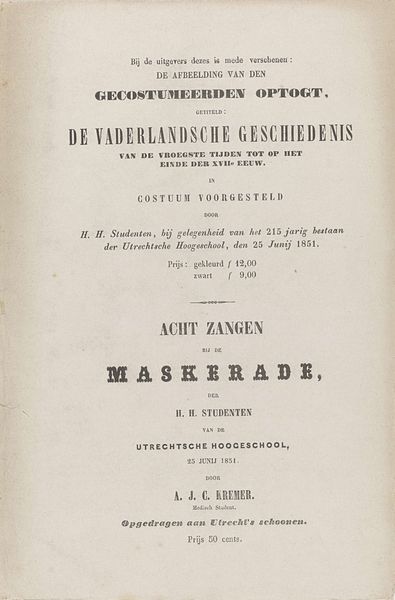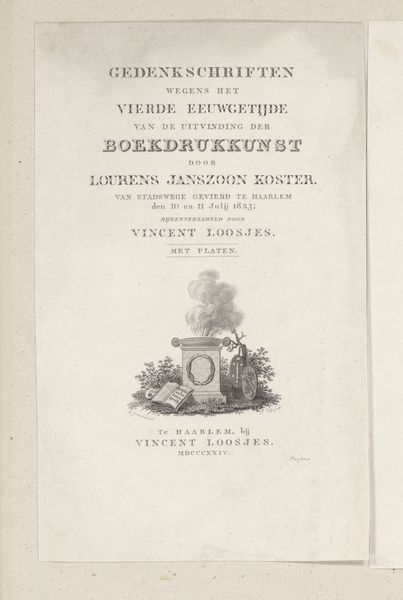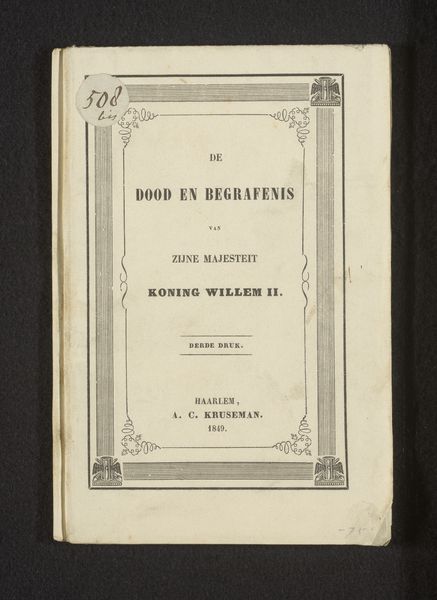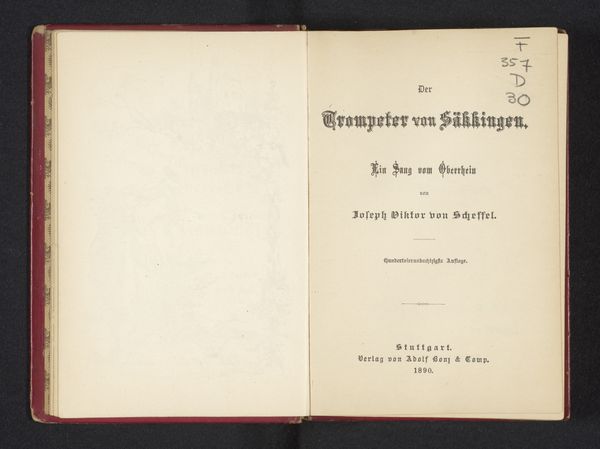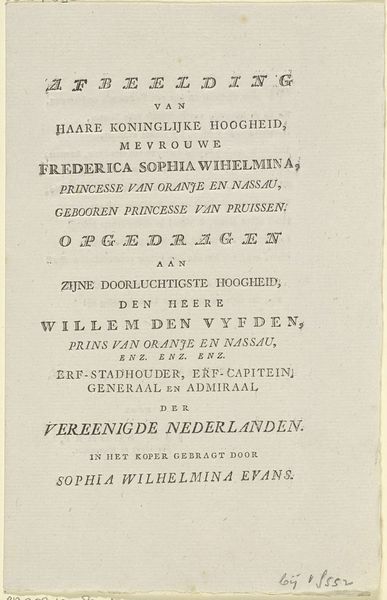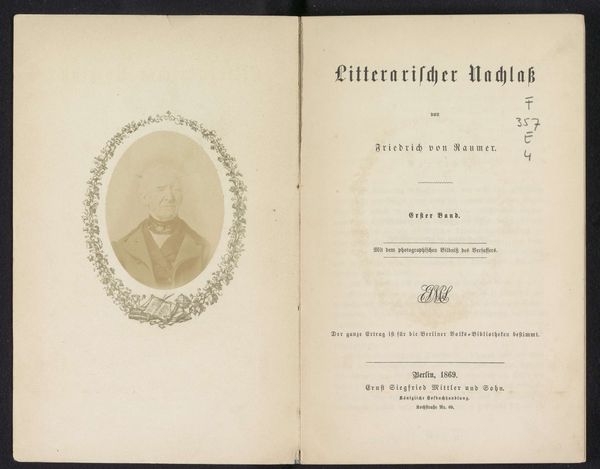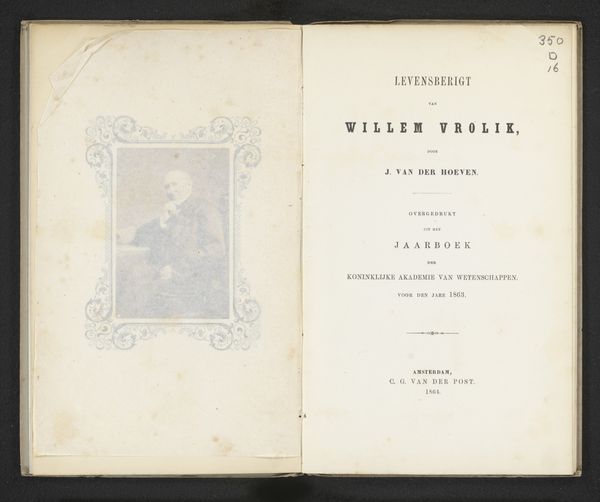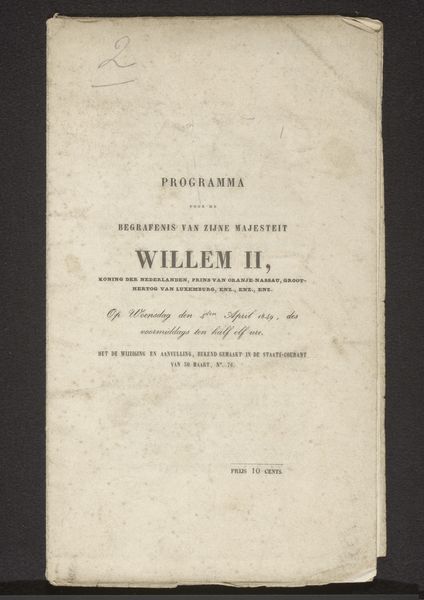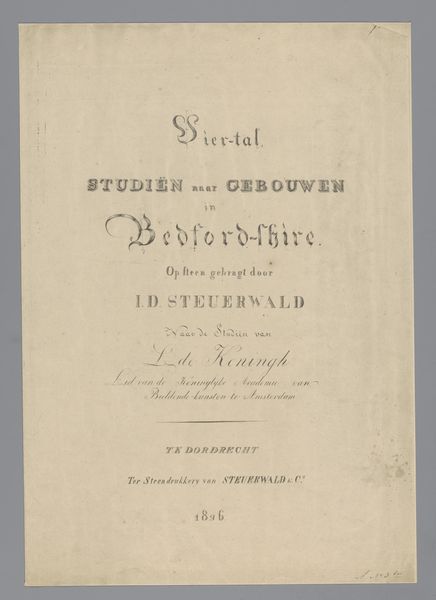
Boekje met een beschrijving van de historische voorstellingen waarmee de band van de Bijbel, het volksgeschenk, is versierd, 1862 1862
0:00
0:00
jjhkemmer
Rijksmuseum
Dimensions: height 170 mm, width 115 mm
Copyright: Rijks Museum: Open Domain
Curator: Before us, we have an intriguing printed booklet titled "Boekje met een beschrijving van de historische voorstellingen waarmee de band van de Bijbel, het volksgeschenk, is versierd, 1862," created by J.J.H. Kemmer. It’s a description of the historical images that decorate the binding of a Bible, a gift to King William III in 1862. The print is on paper and it shows dedication and commitment to Academic Art during that era. Editor: You know, at first glance, it’s the typography that grabs me. The ornate frame, that serif typeface... it's got a sort of somber formality, almost like a legal document or an official decree. I wonder if that seriousness reflects the mood of the images inside, these "historical representations". Curator: Precisely. The publication of this booklet serves a historical purpose beyond its aesthetic value. It demonstrates how images can become tied to specific historical events – in this case, a presentation of a Bible to King William III following the flood disasters of 1861. The booklet would give a framework for understanding the binding. Editor: So it’s a kind of curated experience even back then? A controlled narrative meant to cement a particular view of the king as a caretaker after tragedy? How interesting to consider this not just a descriptive piece, but almost an exercise in branding. Curator: Yes, exactly! It speaks volumes about how the monarchy presented itself to the public. We see that this book acts as a form of public relations; it connects the crown to notions of divine blessing and charitable action during the disaster. Furthermore, you may notice this is typography and print, emphasizing text-based communication which could allow information to be shared in a very direct manner. Editor: Thinking about today, with all our image saturation, the power a single, carefully chosen image had back then must have been tremendous. This document shows a carefully crafted narrative meant to stick in the public mind. It highlights a carefully composed tale where the flood and the King were meant to coalesce and solidify this perception of King William III. Curator: This booklet isn’t just a descriptive catalogue, it's an instrument used in creating a certain cultural and historical image, showing power dynamics at work in the nineteenth century through this presentation gift to the King. Editor: Looking at it now, that formality reads as a kind of constructed history. And perhaps now that I know more of the historical backdrop it feels even colder; I wonder how well-received the gesture was at the time. Thanks, History, I appreciate it!
Comments
No comments
Be the first to comment and join the conversation on the ultimate creative platform.


